As most people with an interest in history trivia know, ‘How long was the Hundred Years War?’ is a classic trick question. The pub quiz master will tell you, with a glint in their eye, that the Hundred Years War lasted much longer than one hundred years. It in fact lasted for 116 years – from 1337 CE to 1453 CE.
The Hundred Years War spanned the reigns of five Kings – five French and five English. It was fought over who was to control the throne of France: the English House of Plantagenet, unifying the French and English thrones, or the House of Valois, as an independent French monarchy. After more than a century of back-and-forth fighting, the French Valois decisively defeated the English at Castillion-sur-Dordogne, securing all of France (beside the port of Calais and its immediate environs) – thus ending the Hundred Years War.
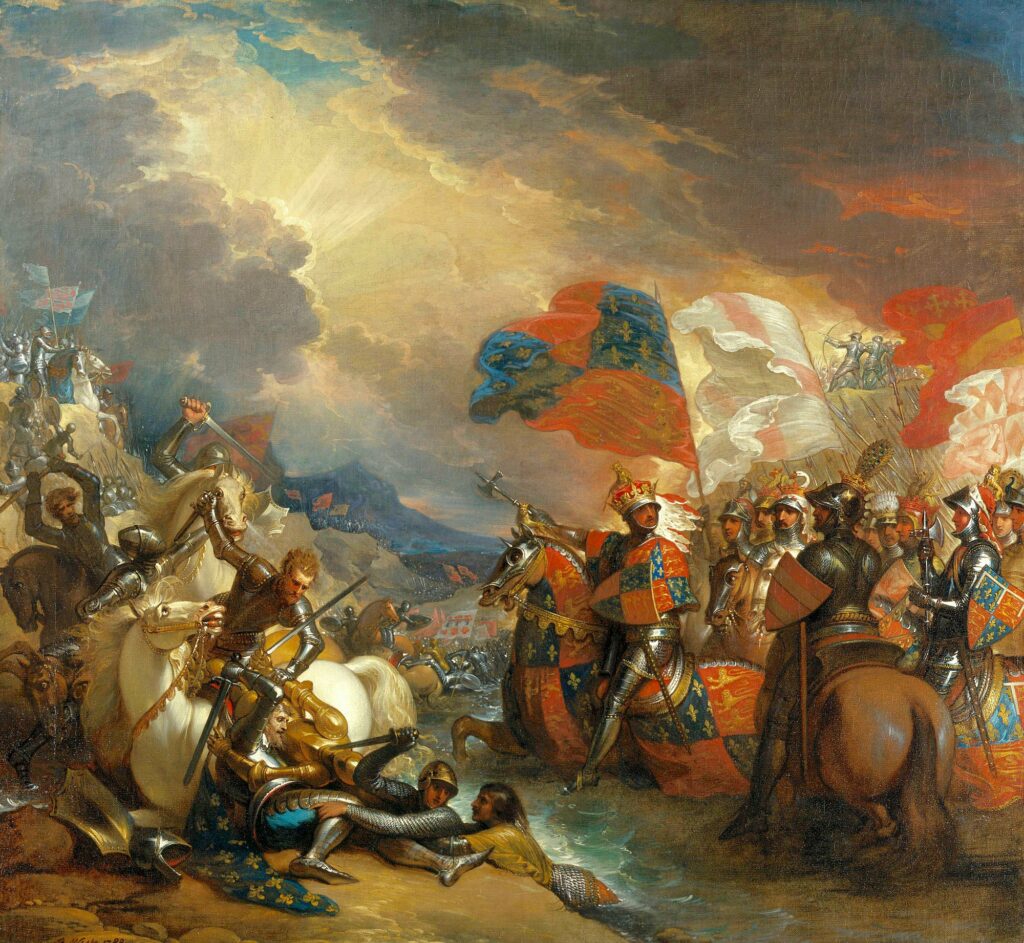
But, is it really that simple? One hundred and sixteen years is an enormous length of time – multiple lifetimes, indeed. Are we to believe that the English and the French were at one another’s throats for more than an unbroken century? When we start to look at the Hundred Years War in detail, things begin to become altogether more muddy. There were long periods of peace, several truces which lasted years apiece, and even one formal treaty that supposedly ended the war halfway through. So – have historians got it all wrong? Does the century-and-some-change between 1337 and 1453, which saw enormous military and social change, really constitute a single war? Or is it in fact multiple distinct conflicts that have just been grouped together for historical convenience? Is there even such thing as the Hundred Years War?
When analyzing how long was the Hundred Years War, it helps to get everything in perspective by understanding its causes. Ultimately, the root cause of the Hundred Years’ War lay in the invasion of England in 1066 by William, Duke of Normandy. The Norman Duke’s seizure of the English throne meant that he was simultaneously King of England, and a holder of lands in France which bound him in fealty to serve the King of France. This put the two monarchies on a collision course: England’s increasingly powerful monarchs would never be satisfied knuckling under to the Kings of France. Expanding his French holdings further, King Henry II of England assembled a powerful bloc of nobles in France, creating the Angevin Empire which straddled the English Channel.
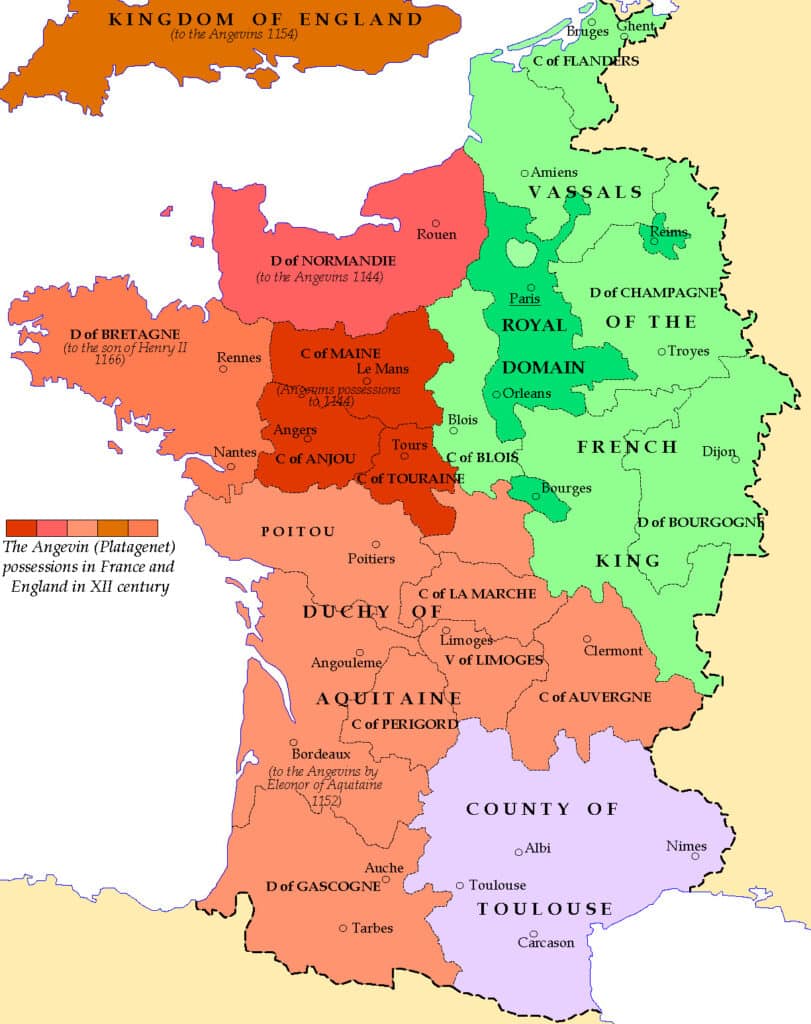
As Duke of Normandy and Duke of Anjou (and claiming the allegiance of the Aquitainian lords through his powerful wife Eleanor of Aquitaine), most of the Western half of modern France bore allegiance to Henry and the Angevin Kings of England rather than the Capetian Kings of France. Though the Angevin Empire was ultimately unstable (much of it was lost by King John), English monarchs still had significant holdings in France, particularly the region of Gascony in the south-west. Thus, it was only a matter of time until the closely-entangled would come to major blows.
The outbreak of war became inevitable with the heirless death of Charles IV of France in 1328. Charles’s closest male relative was King Edward III of England: Charles’ sister Isabella had married the English King Edward II as a child to try to bring an end to the squabbling thrones – and she had been a major force in English politics, earning the nickname ‘the She-Wolf of France’ with her intelligence and political acumen. English law dictated that Charles’ French throne would pass to the sixteen-year old Edward III via his mother Isabella. But France and England had very different legal systems: where English law was a combination of Anglo-Saxon common law and Norman law, French law was based on the Salic Law of Charlemagne, and, critically, it forbade succession through the female line. This effectively cut Edward out of the line of succession, in favour of the deceased Charles’ paternal cousin Count Philip of Valois – a candidate much more acceptable to the French nobility.
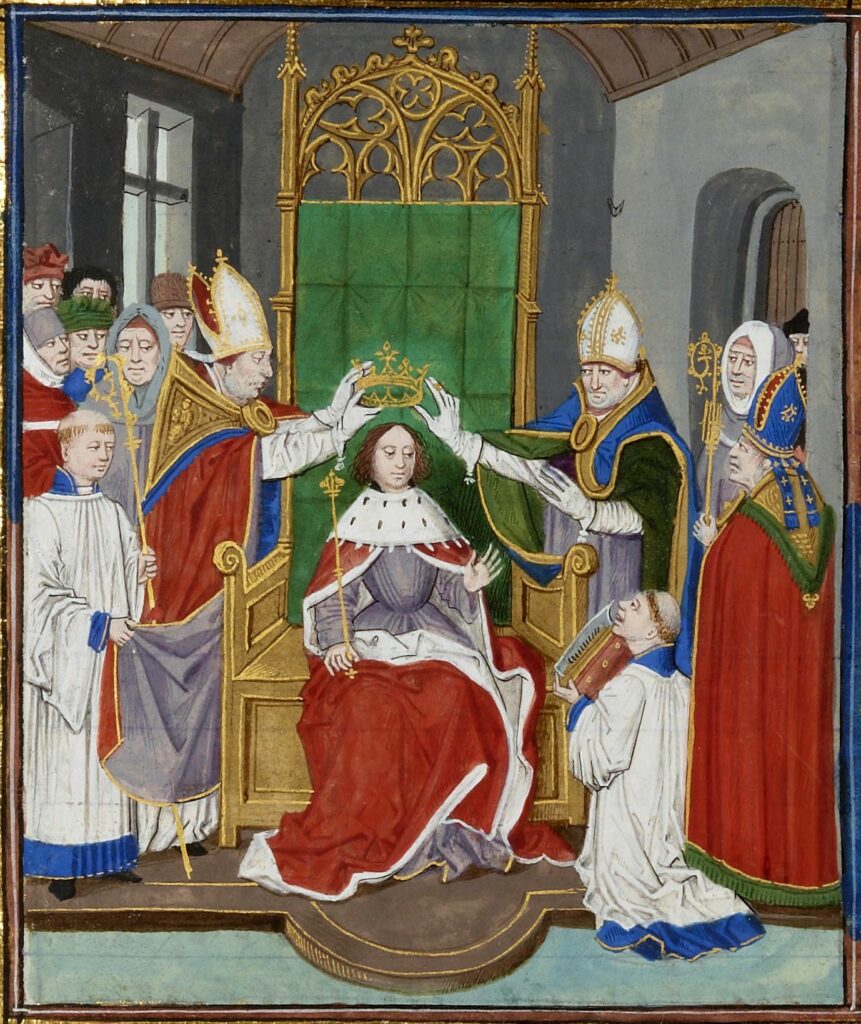
At first, Edward gritted his teeth and paid lip service to the new French King – but their relationship soured into a series of calculated slights: Philip VI allied himself with the Kingdom of Scotland; Edward III provided succour to enemies of the French throne; Philip parked his navy provocatively in the Channel; much ink was spilt and angry missives exchanged. The breaking point came when Philip confiscated Edward’s holdings in Gascony – a move which appeared very much to be a king disciplining his feudal junior. Edward could not conscience such an affront to her prerogatives, and declared war, determining to force his claim on the French throne by arms.
Edward was slow to begin the war, being beset by financial issues and having to raise money to campaign by going cap-in-hand to continental moneylenders. Whilst Edward quickly assembled an anti-French coalition of English nobles, German princes, Flemish rebels, and merchant backers in the Low Countries, his vassals in Gascony had to defend themselves whilst their lands were ravaged. The war looked like it was to be over very quickly when the wealthy French amassed a huge invasion fleet, but through some extremely deft naval commanding, a much smaller fleet of converted English and Flemish merchant ships resoundingly destroyed the French at the Battle of Sluys. At the cost of only two ships and five hundred lives, the English coalition captured a staggering 166 French ships, sinking a further two dozen. With a shattering naval victory, England would never again be at serious threat of invasion, and the theater for almost all of the rest of the Hundred Years War was on French soil. With the way open to mainland France, the English landed two large armies – but victory on land was to be more elusive than that at sea. The first force, led by French exiles, was comprehensively smashed in Artois, whilst the other wing, led by the King, besieged Tournai in modern Belgium. The city held out for relief by an approaching army under the command of King Philip of France – and rather than force a clash of kings, the English army withdrew and sued for a truce in the autumn of 1340.
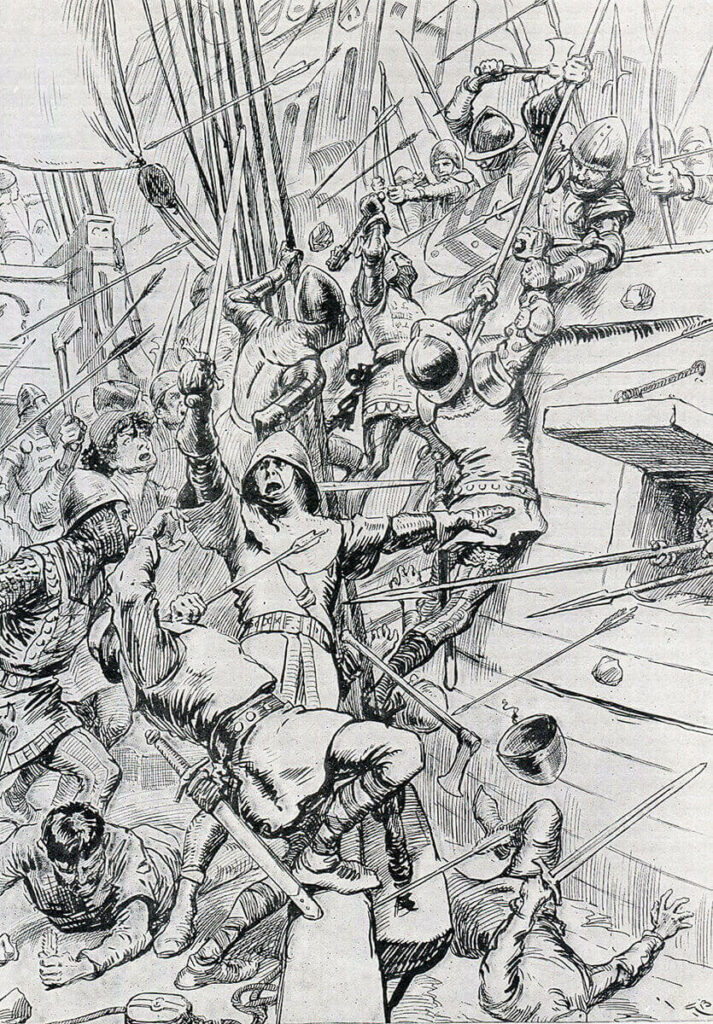
After just four short years, the conflict between France and England had changed markedly. Initially, it looked to be a decisive and bloody war, with a wealthy and well-equipped France faced by a broad coalition of English and continental allies – we might have been talking about the Four Years’ War, not ‘How long was the Hundred Years War’! But over those four years, both sides exhausted themselves financially and diplomatically: huge amounts of wealth had been raised and spent very quickly for little gain. The English dominance of the Channel combined with their difficulty of supporting armies on campaign in France posed a stalemate that saw England’s allies rapidly deserting Edward’s cause, eyeing a protracted and expensive series of campaigns. Thus, by the truce in late 1340, we can already see the seeds of a long war.
The treaty of 1340 was to last five years – but only a year later, hostilities broke out again, this time over the succession of Brittany. The rival contenders for the vacant Duchy of Brittany were backed by English and French thrones respectively, and the conflict would eventually resolve in Edward’s favor. We can see the beginning of a pattern: that even in times of truce, the overarching ‘Cold War’ between France and England resulted in smaller conflicts being drawn into the larger war, with various sides seeking (and enthusiastically receiving) aid from one or both sides.
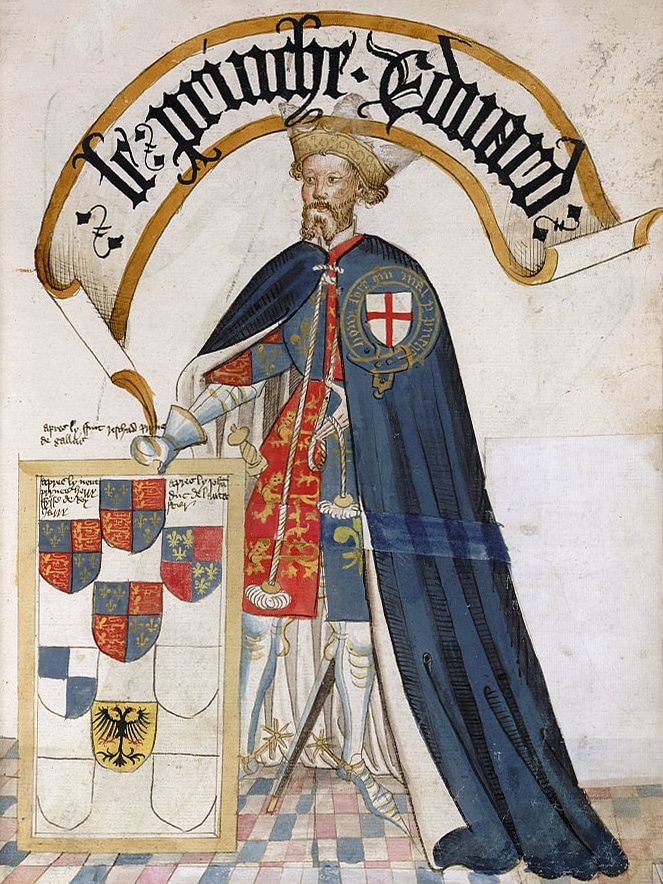
Under pressure from the English Parliament to achieve a victory (or to conclude a lasting peace with failure), Edward soon renewed the war. Returning to continental campaigning, at his side in campaign was now his eldest son, also called Edward – but better known to history by his instantly-recognisable appellation: the Black Prince. The Prince would become a stalwart commander in time, and distinguished himself in the campaign which culminated in the Battle of Crécy in 1346, at which he personally commanded the English right wing.
Crécy was the first occasion that the rival monarchs would face each other in battle, and it was a disaster for the French aristocracy. Around ten thousand English soldiers, most of whom were experienced bowmen armed with the legendary six-foot-tall yew longbow, were met by a huge army of French knights and footmen – outnumbering them by two-to-one or more. The English were well-prepared, taking position on a hill above a marshy bog. The French were disorganized and impatient, and groups of French knights began the attack before orders from King Philip. Bogged down in the marsh, they were sitting targets for the long goose-feathered arrows of the English longbowmen. Those who were not shot or drowned in the mud staggered up the slope, only to be mercilessly dispatched by the waiting English men-at-arms. More than 1,500 French nobles perished along with thousands of common soldiers; even King Philip VI received an arrow in the jaw. The French were pursued and scattered for miles though the countryside.
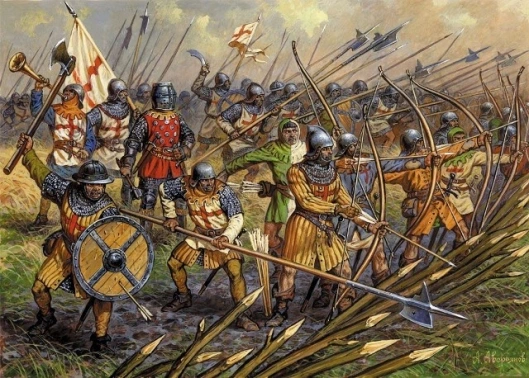
Immediately, Crécy destroyed the French army and permitted the English to besiege and take the port of Calais without relief eleven months later. But it had much wider ramifications too. It shattered the French government, leading to a protracted peace between England and France. As well, it placed the longbow as the pre-eminent battlefield weapon of the era. Before its eclipse by rising gunpowder weaponry and improving crossbows, it would inflict another devastating loss on the French at Agincourt in decades time.
The Black Death swept across Europe in 1348-50, destroying any ability to field armies on either side of the Channel. The ailing Prince Philip VI died, passing the throne to his son John II, who determined to continue the battle to save his throne from English interference. After the Black Death receded in the mid 1350s, Edward III’s son the Black Prince, now leading English armies in his own right, invaded France repeatedly. Finally, at Poitiers, the Black Prince met John II in battle – and succeeded in capturing the monarch. This caused a wide-spread political crisis in France, and finally forced the French to the negotiating table. Whilst the King’s ransom was set at an eye-watering three million gold écus, the English were not militarily strong enough to force a fundamental settling of the dynastic debate. Whilst they wished to demand the restoration of the Henry II’s Angevin Empire and the permanent partition of France, they had to make do with Gascony and Aquitaine.
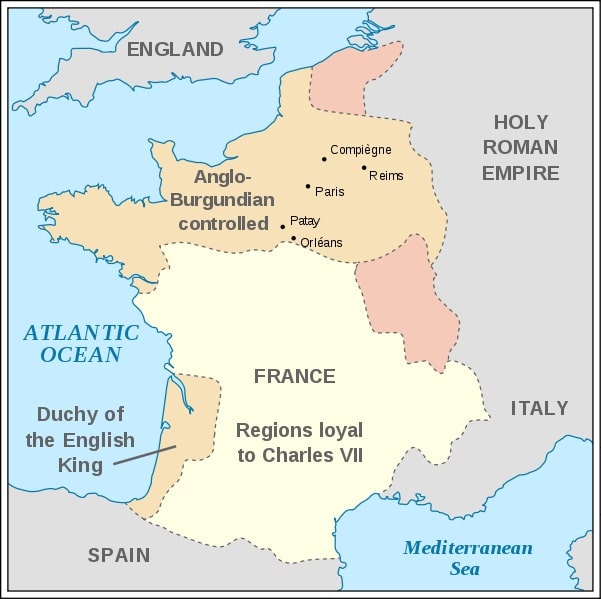
So the resulting Treaty of Brétigny, signed in 1360, would make a peace – can we answer ‘How long was the Hundred Years War?’ with ‘27 years’? No, of course we can’t. The peace would not be a lasting one. In only nine years, John II’s son, Charles V, would reopen hostilities to reverse the gains made by the English. Thus would continue the cycle: temporary peaces would be broken, proxy conflicts would spill over into open war, for almost another century. Only the emergence of the conflict between the Lancastrians and the Yorkists that resulted in the Wars of the Roses over the English throne would end the cycle for good, finally grinding to a halt with a series of French victories in the 1450s that deprived England of all continental holdings but the port of Calais – souring the interest in its Angevin ambitions, and turning attention to civil war at home.
Postscript:
After the Hundred Years War, no English monarch seriously threatened to enforce their claims as Kings and Queens of France. But it is an interesting quirk of history that the monarchs of England (and later of the combined crowns of Great Britain) continued to style themselves ‘Kings/Queens of France’ amongst their other titles – though few would make any military moves against French territory. The Pale of Calais was seized by France during the Italian Wars in 1558, and the subsequent Treaty of Cateau-Cambrésis contained a provision formally renouncing Mary I’s claim to the port, signalling a changing European dynamic. However, English monarchs still used the title ‘King/Queen of France’ all the way through to the Napoleonic Era. The English monarchs’ use of the title briefly became a sticking point in the negotiations at the end of the War of the First Coalition, at which a resurgent France was calling the shots: they demanded that the English monarchs formally retire the title. Though Prime Minister William Pitt called the title ‘a harmless feather’, King George III of England nevertheless took the opportunity to drop the title in the Act of Union 1800, which formally unified Great Britain and Ireland into a single state with a single crown – notably without including the claim to the throne of France. Thus ended a claim which (on paper) had been held by British monarchs since Edward III. So – you could make a case that one answer to ‘How long was the Hundred Years War’ is: 463 years!

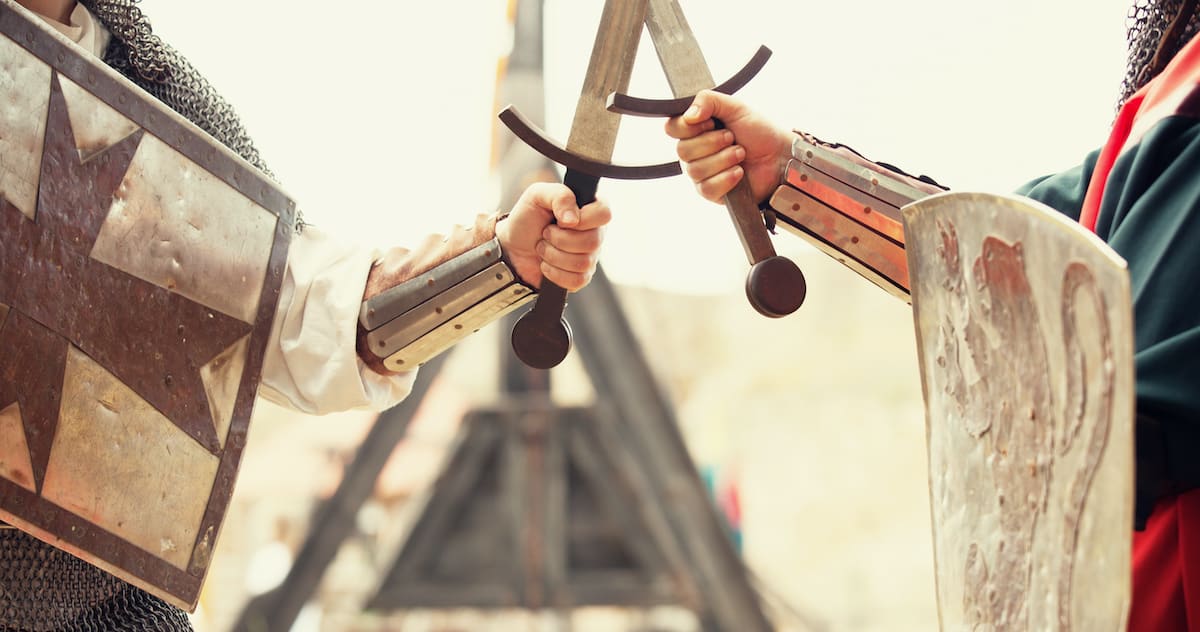 Historical Swords
Historical Swords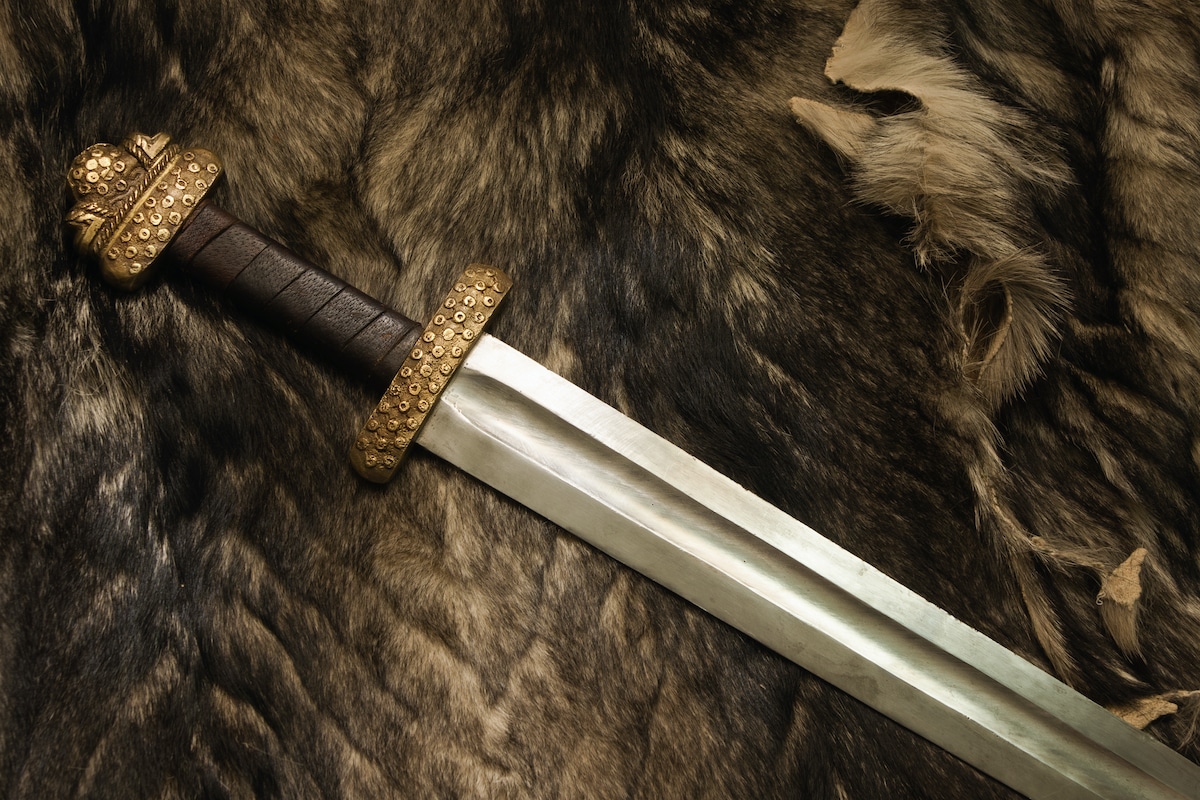 Norse & Viking Swords
Norse & Viking Swords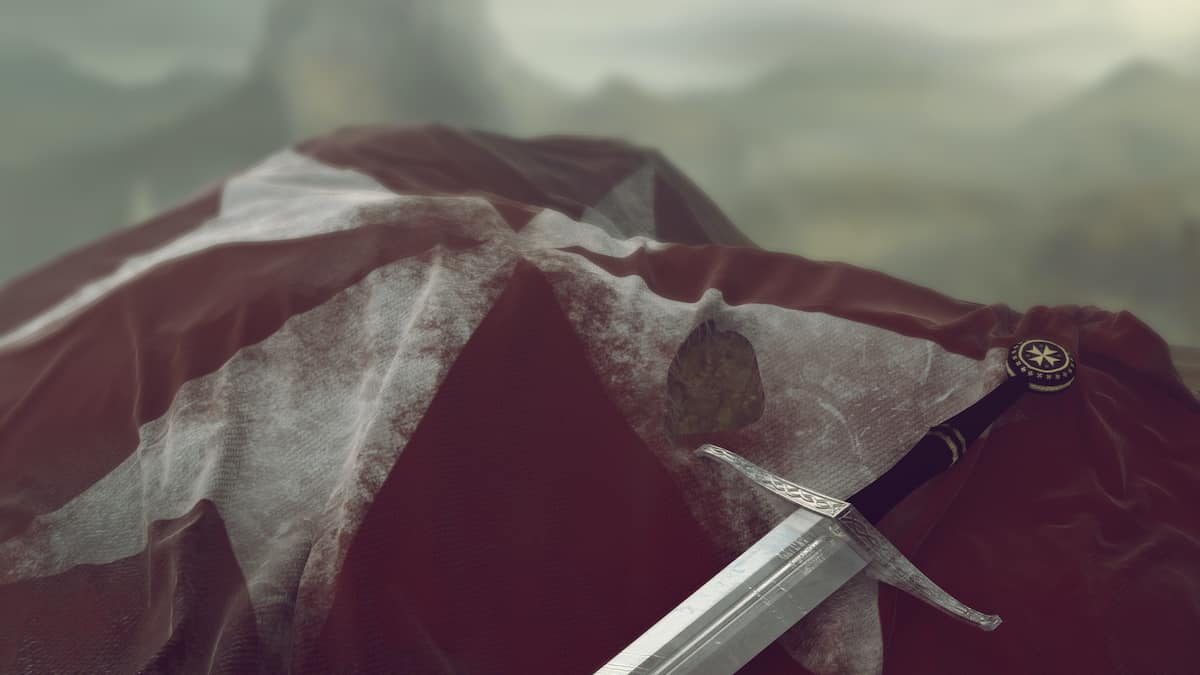 Templar Swords
Templar Swords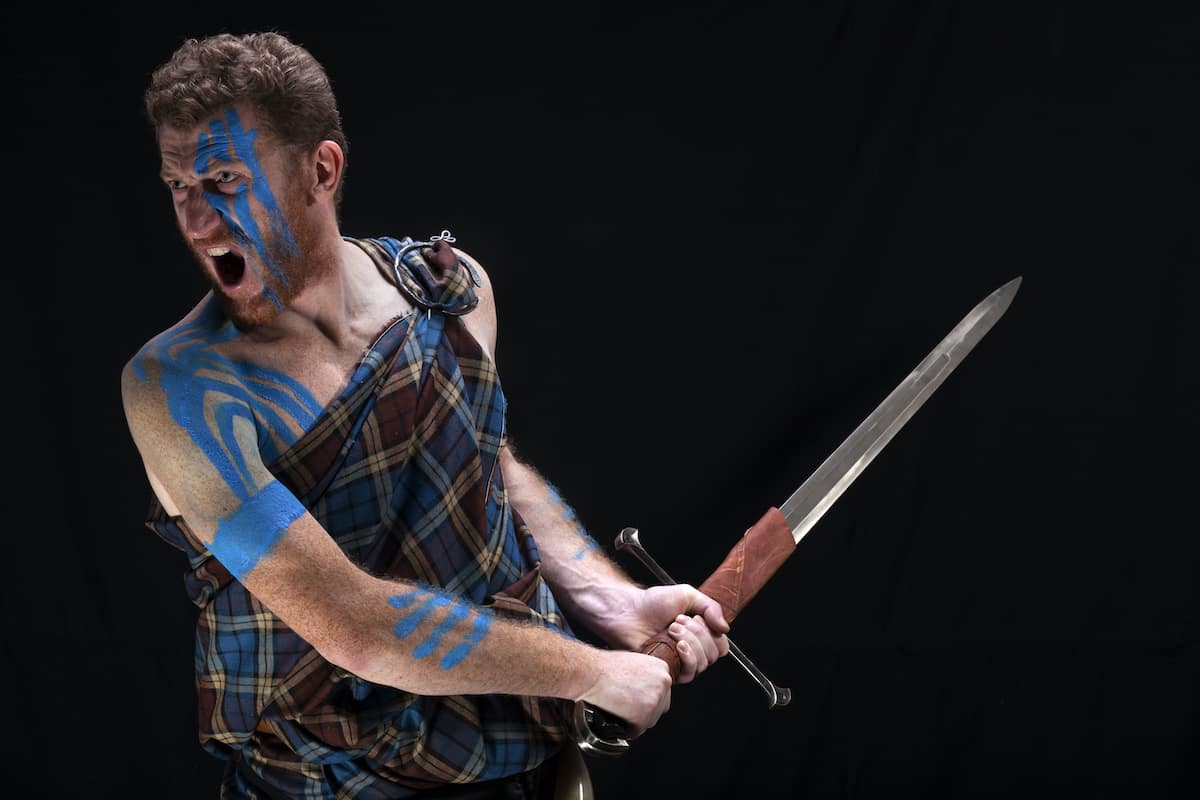 Claymore Swords
Claymore Swords Fantasy Swords
Fantasy Swords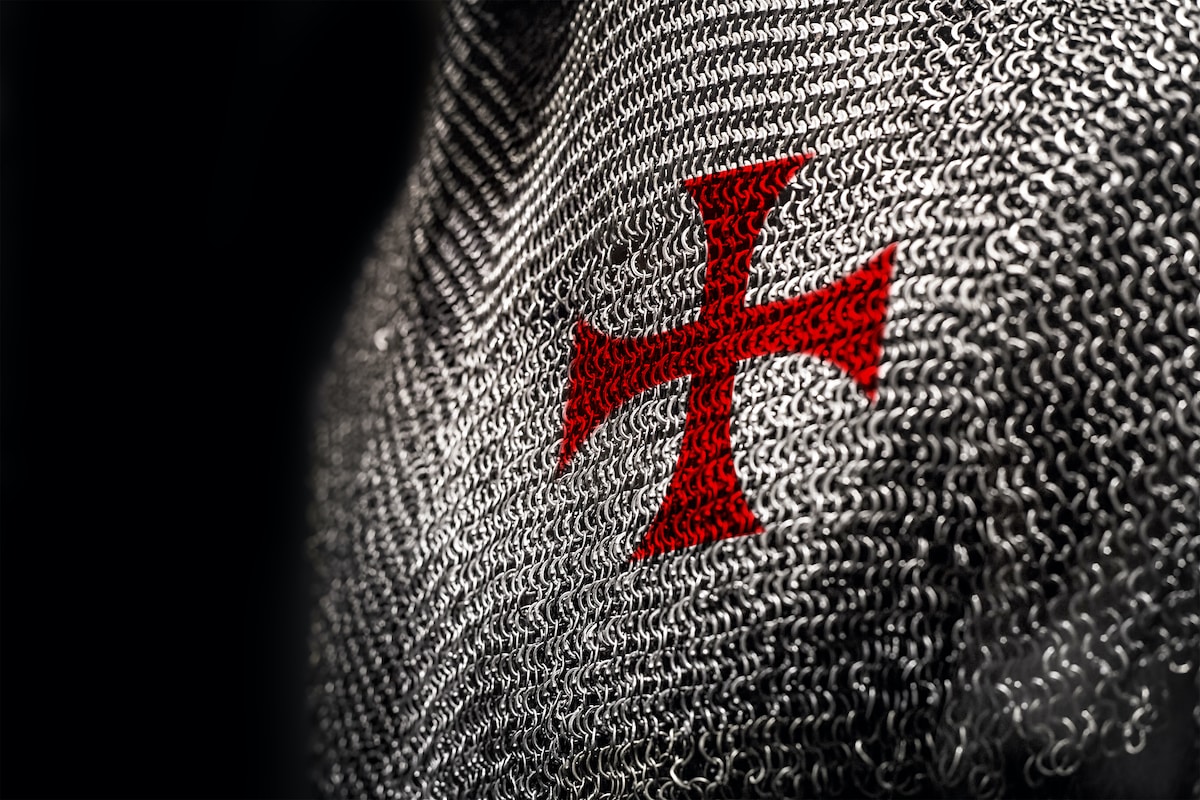 Chainmail
Chainmail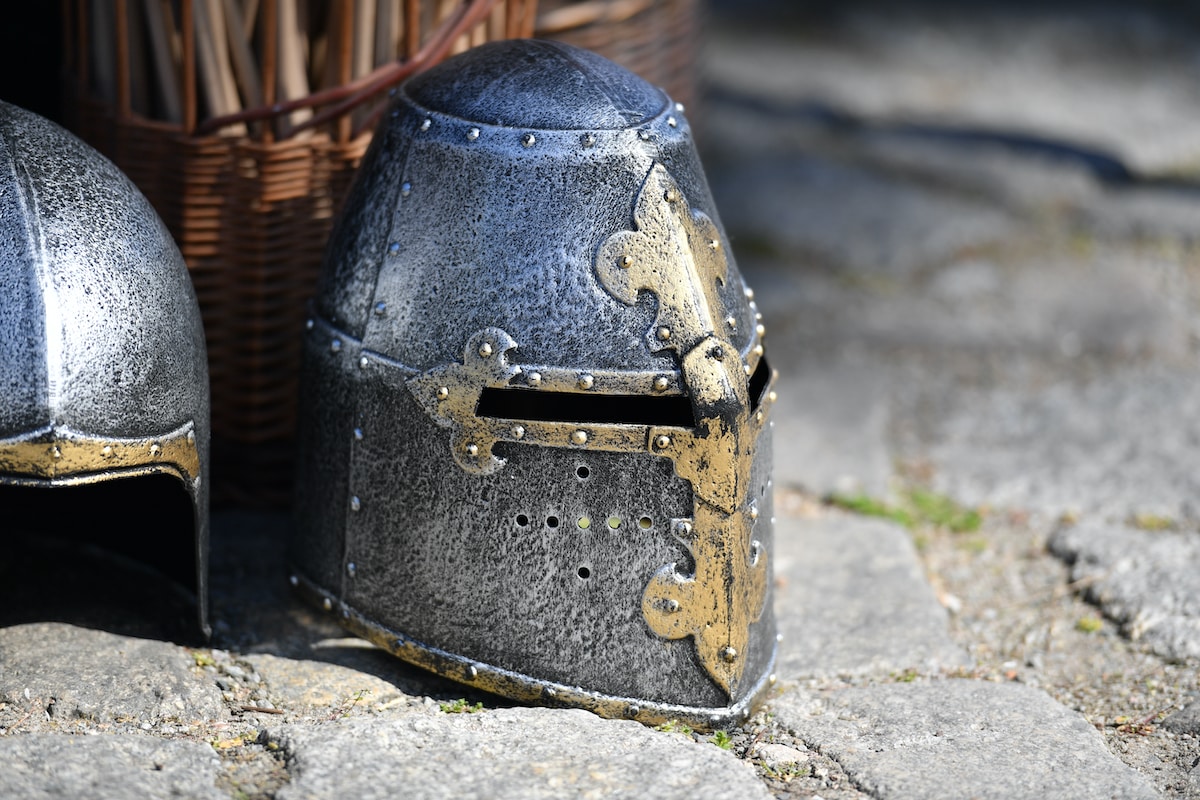 Helmets
Helmets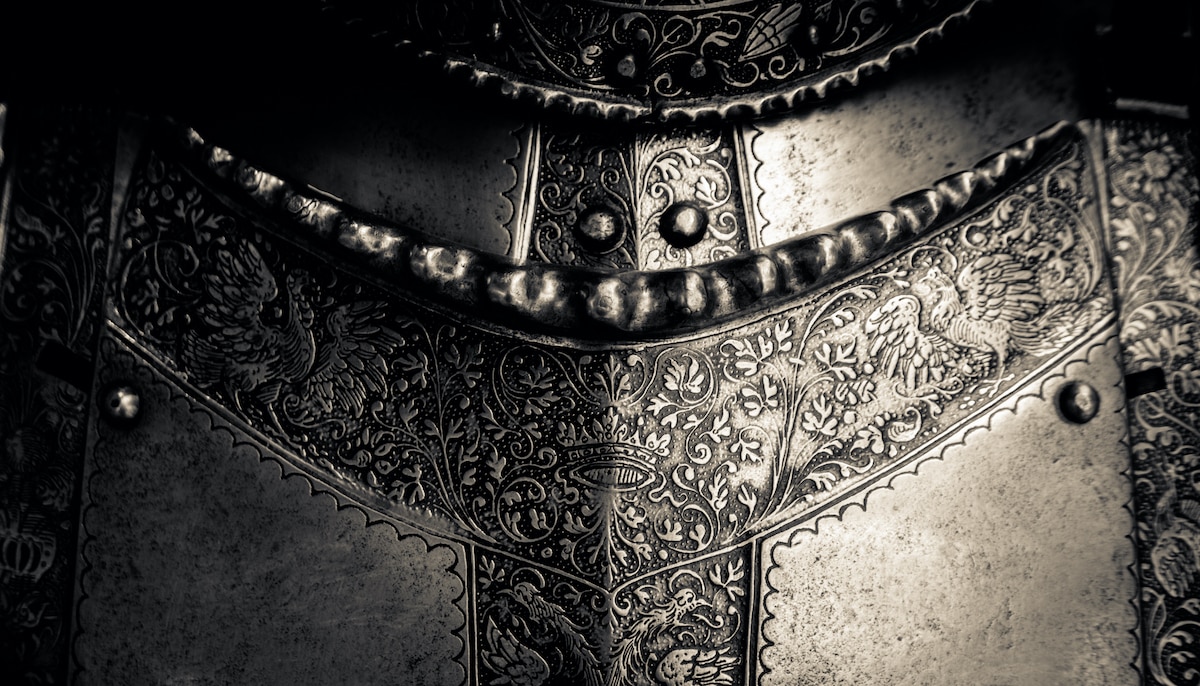 Torso Armor
Torso Armor Bracers and Arm Protection
Bracers and Arm Protection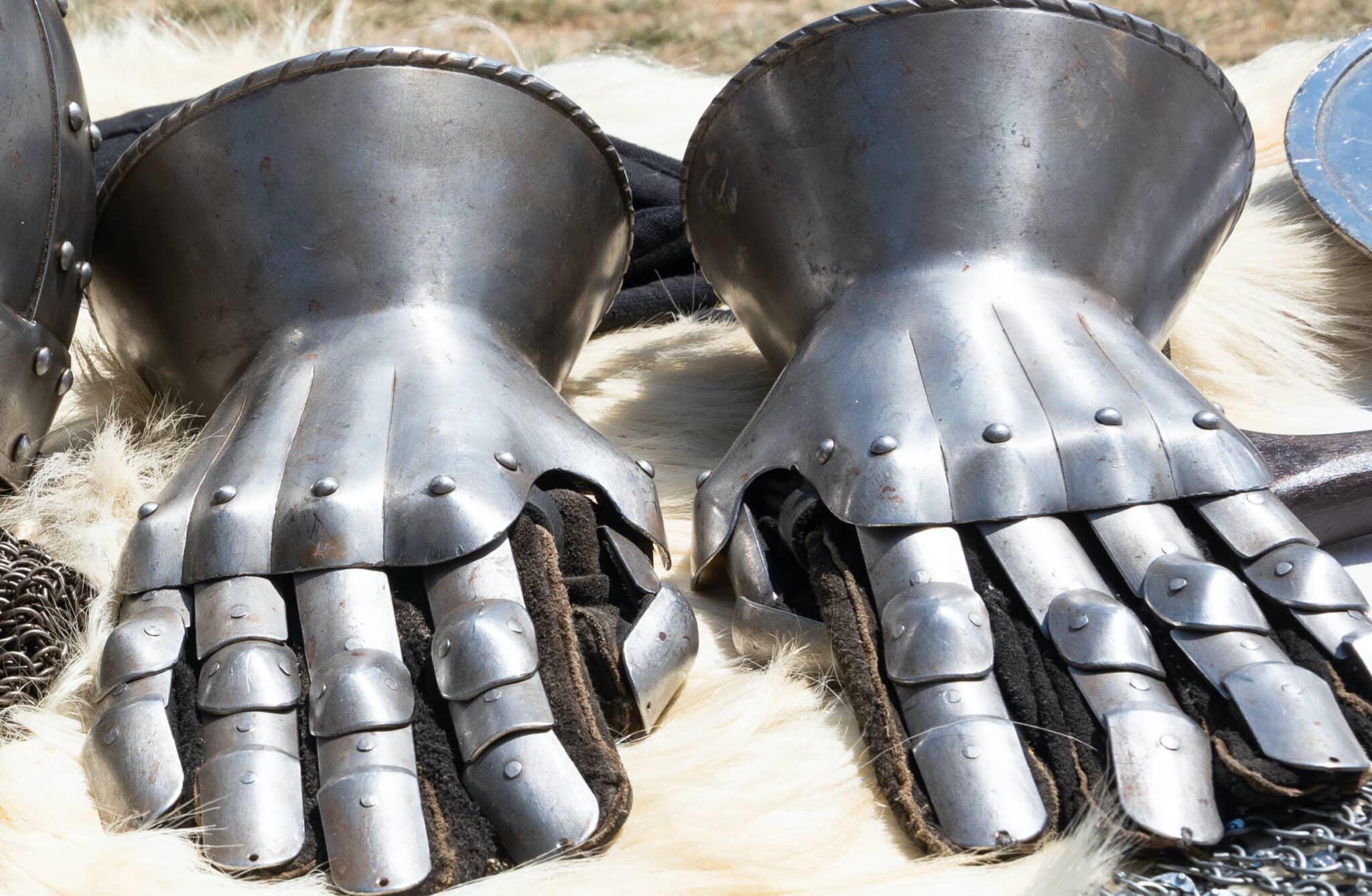 Gauntlets
Gauntlets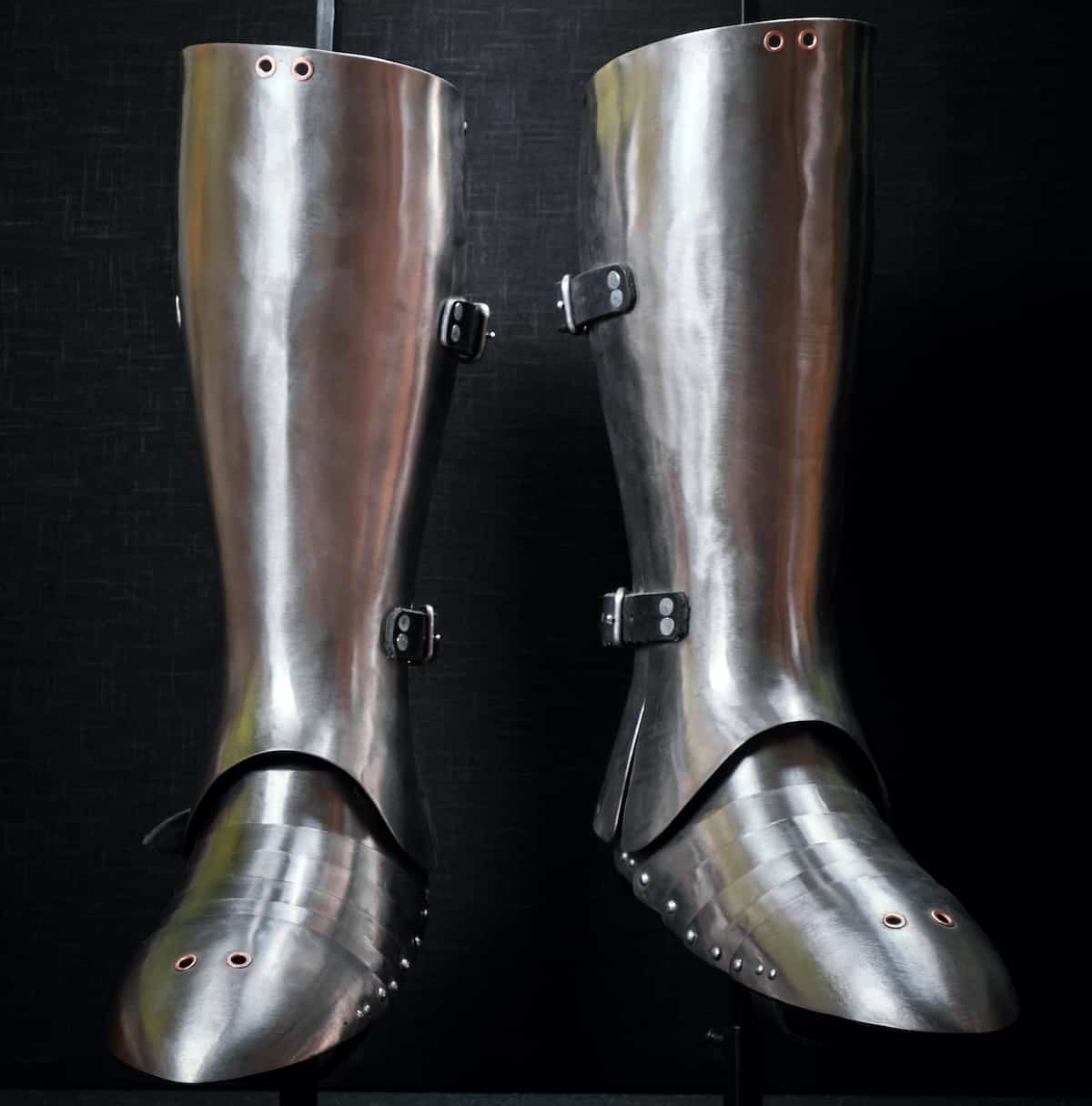 Leg Armor
Leg Armor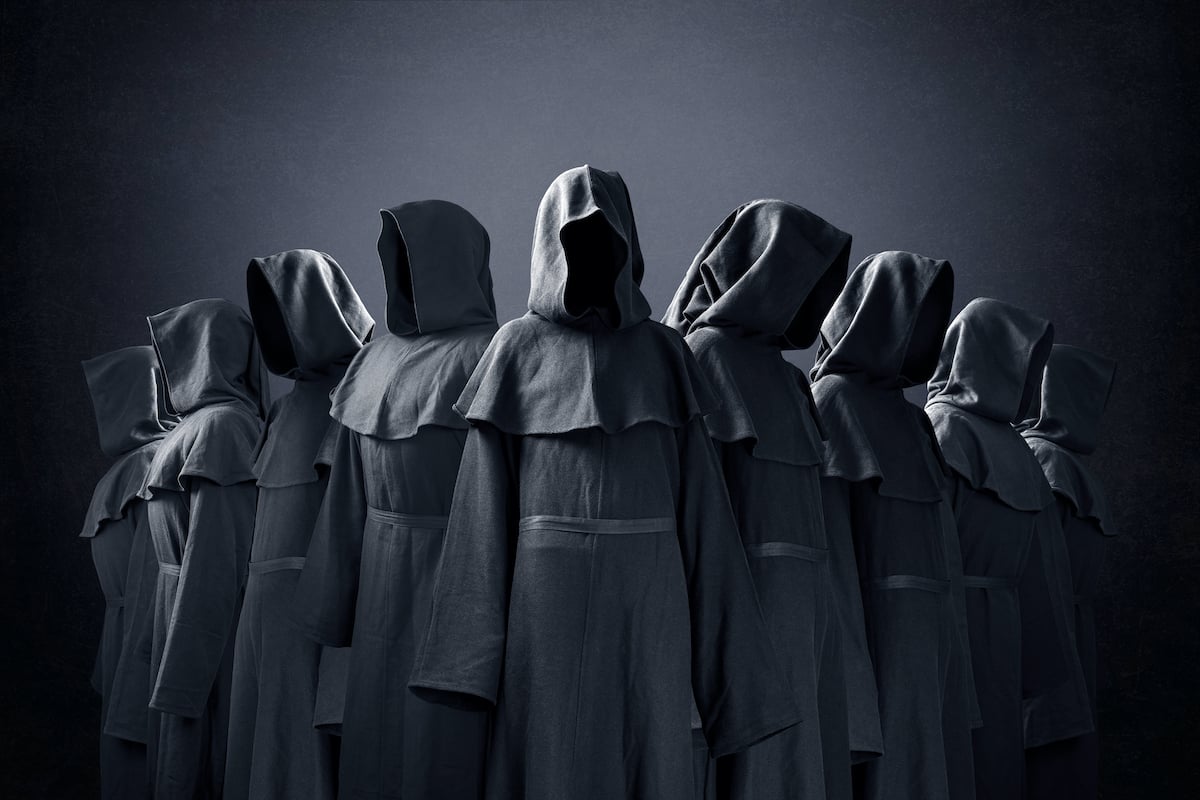 Cloaks
Cloaks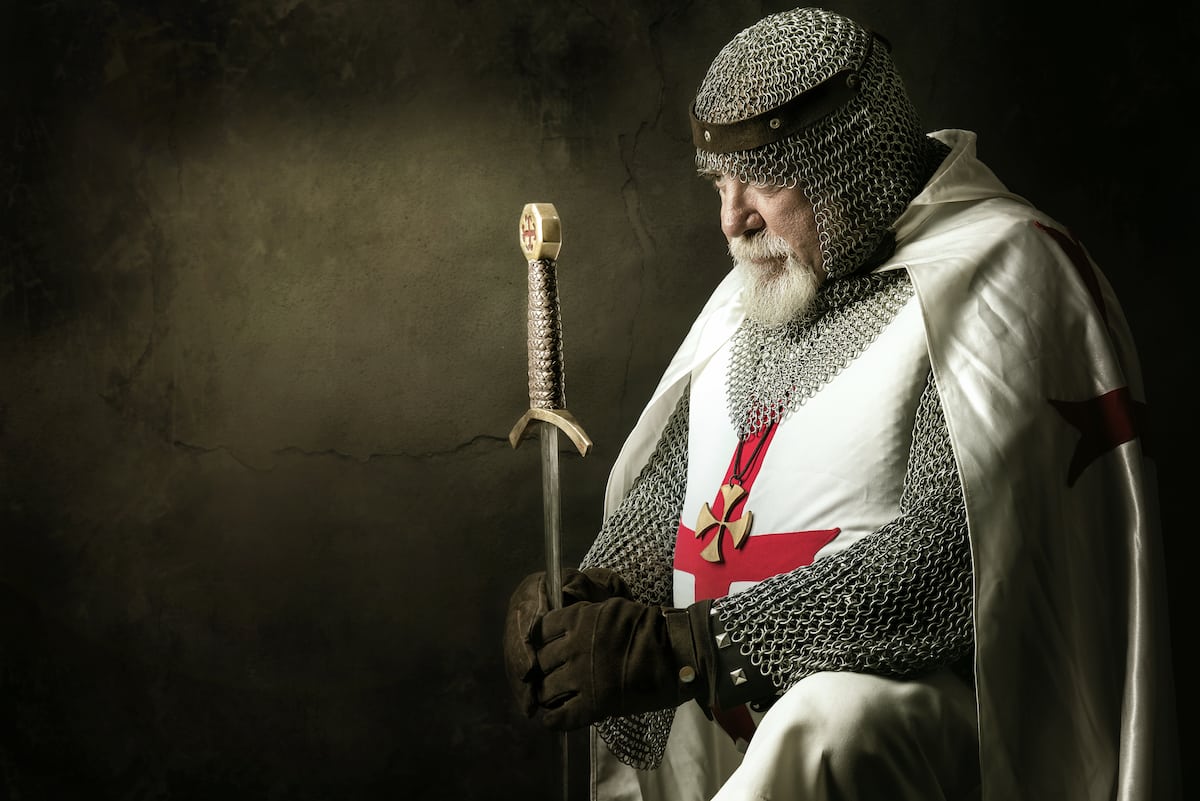 Tabards
Tabards Shirts
Shirts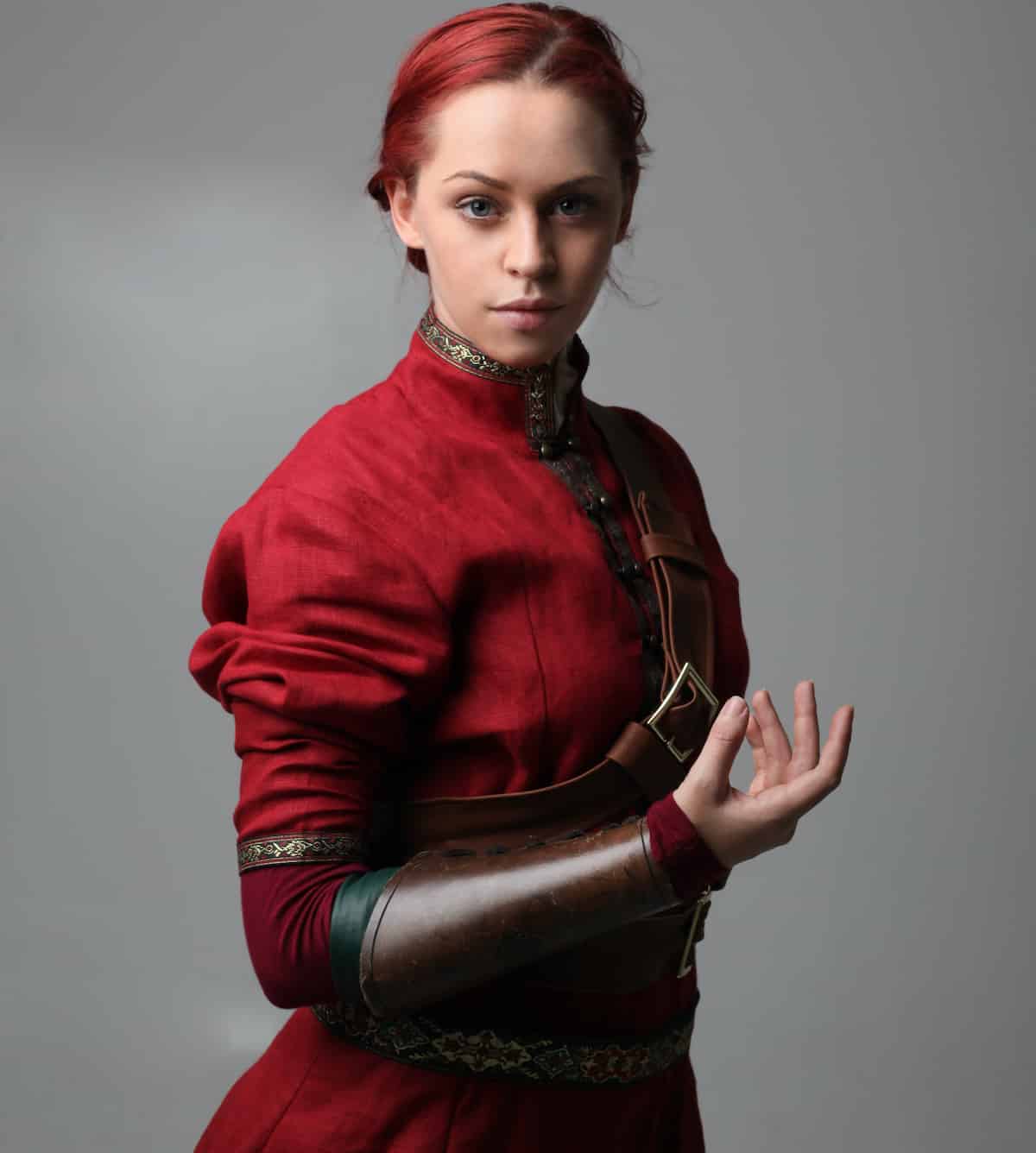 Tunics
Tunics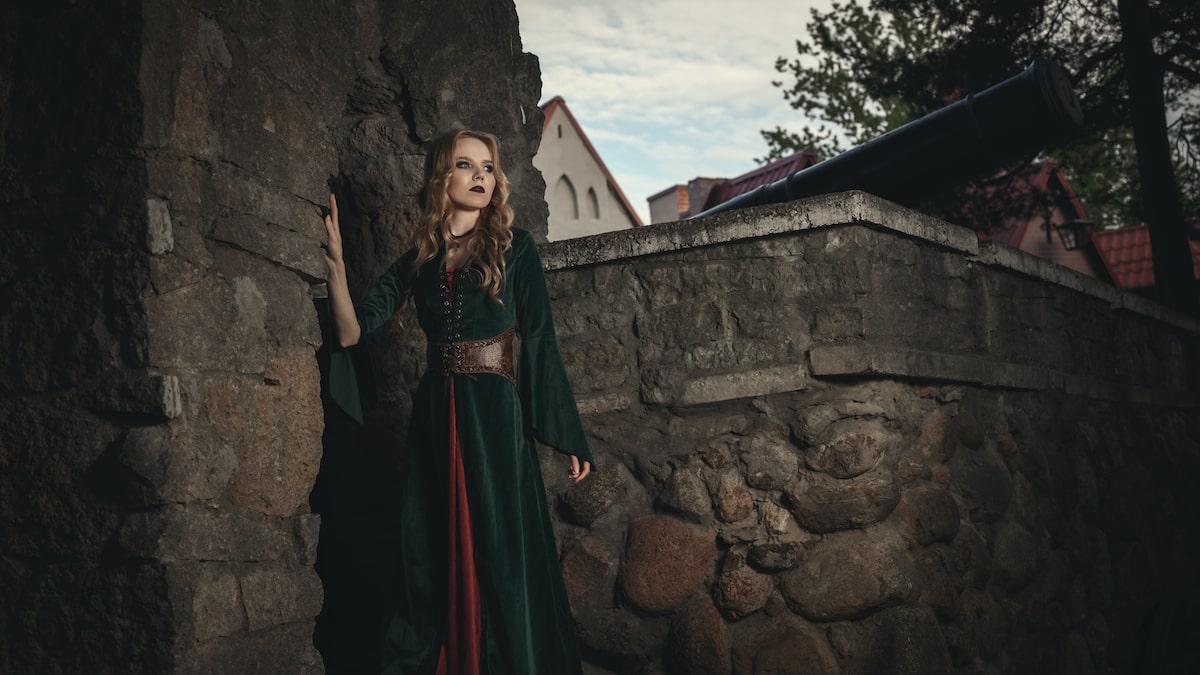 Dresses
Dresses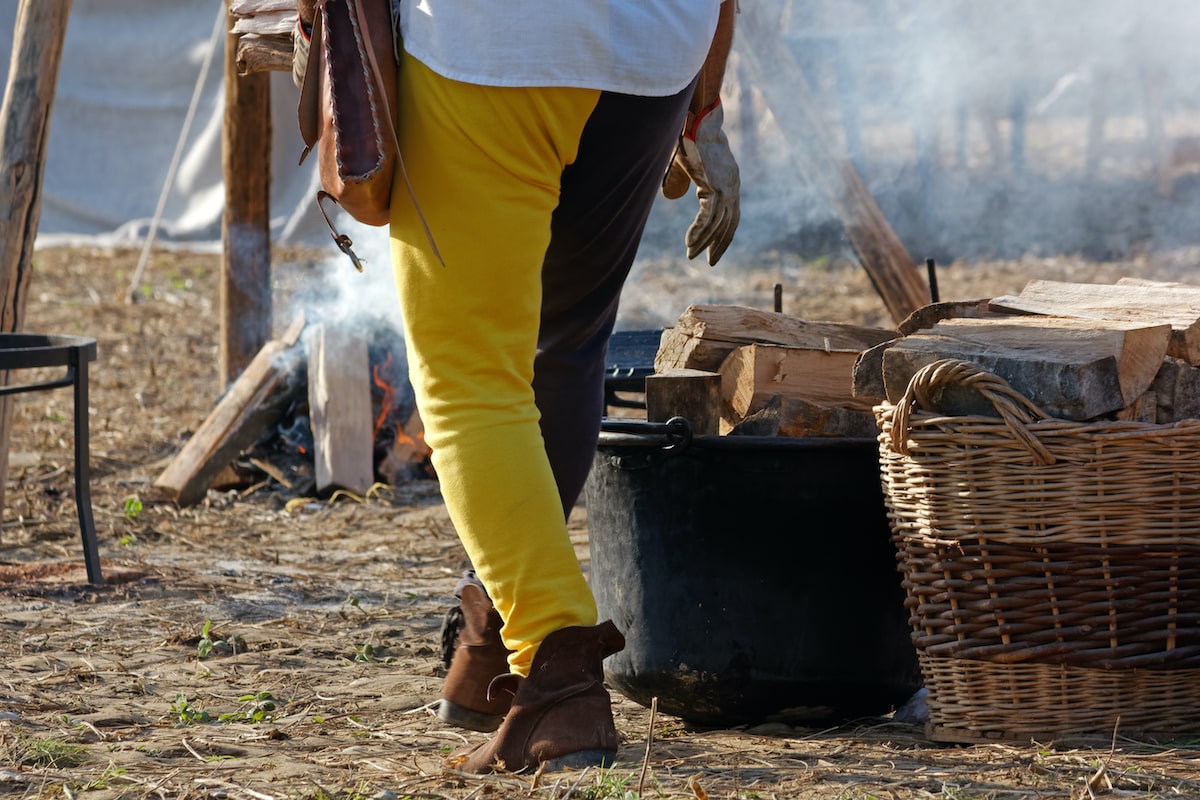 Pants
Pants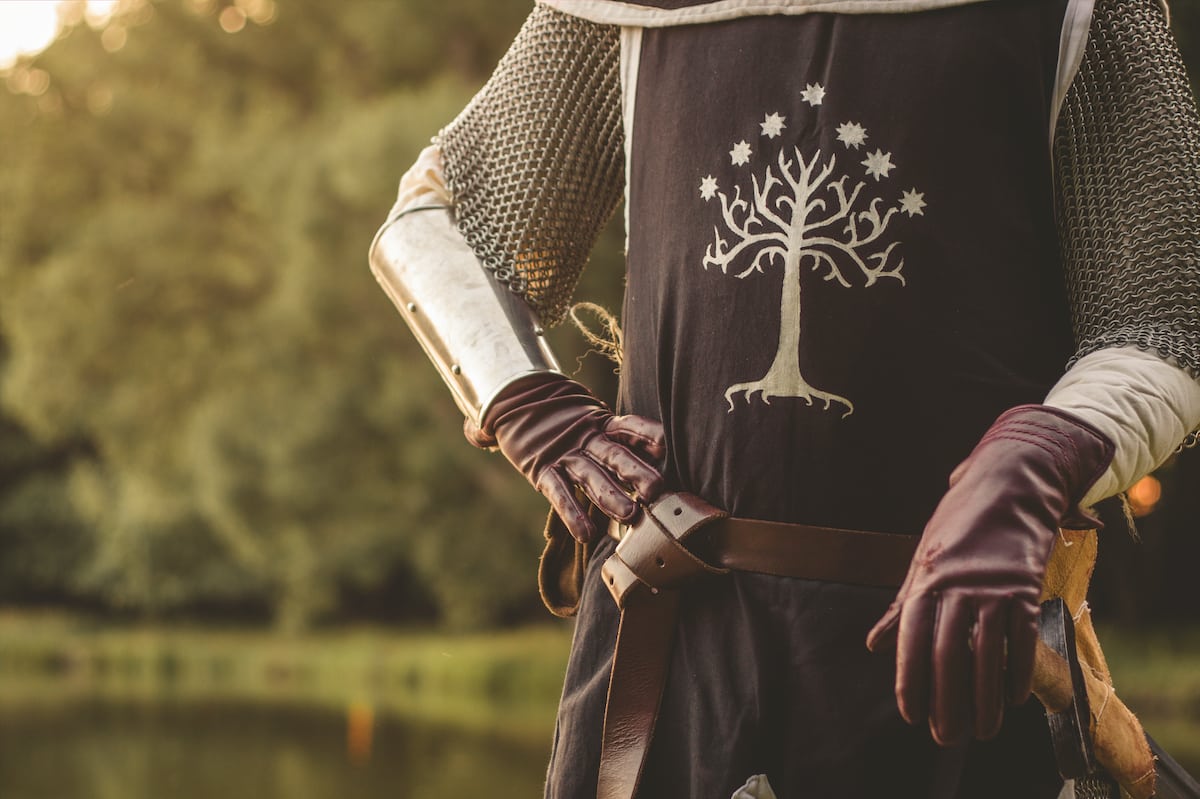 Gloves
Gloves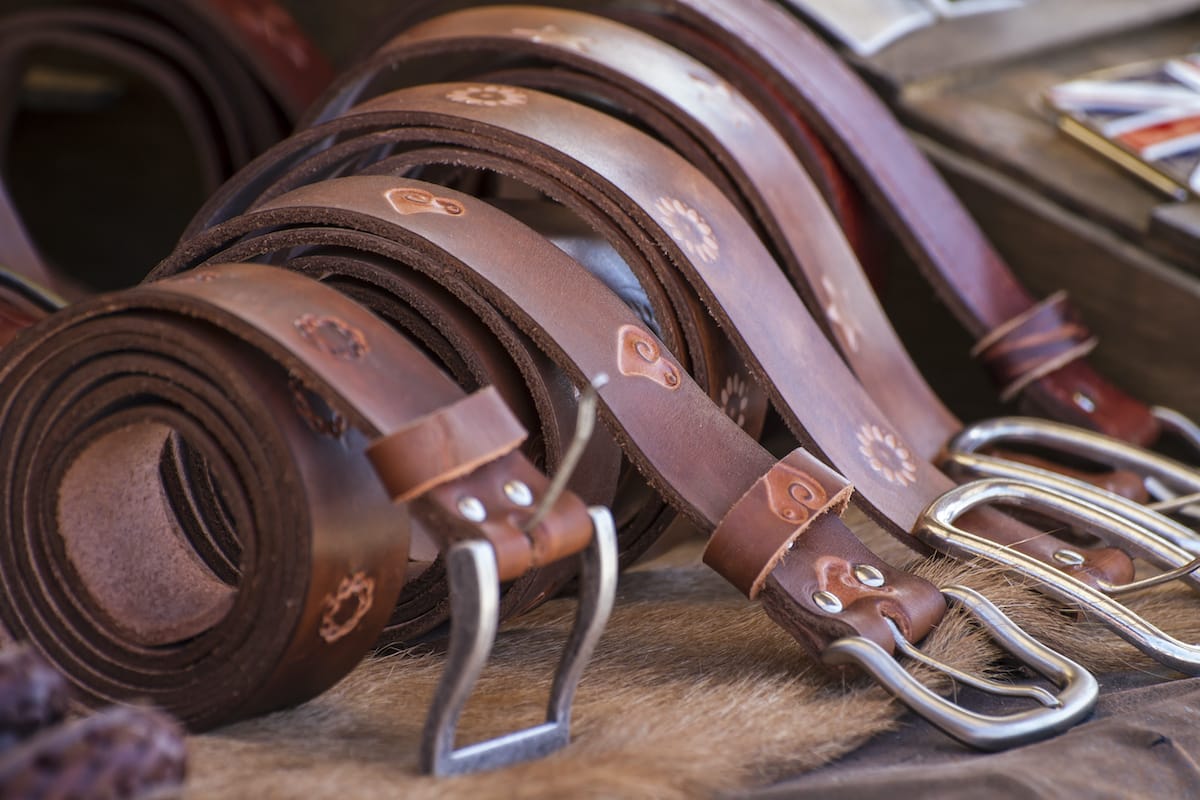 Belts
Belts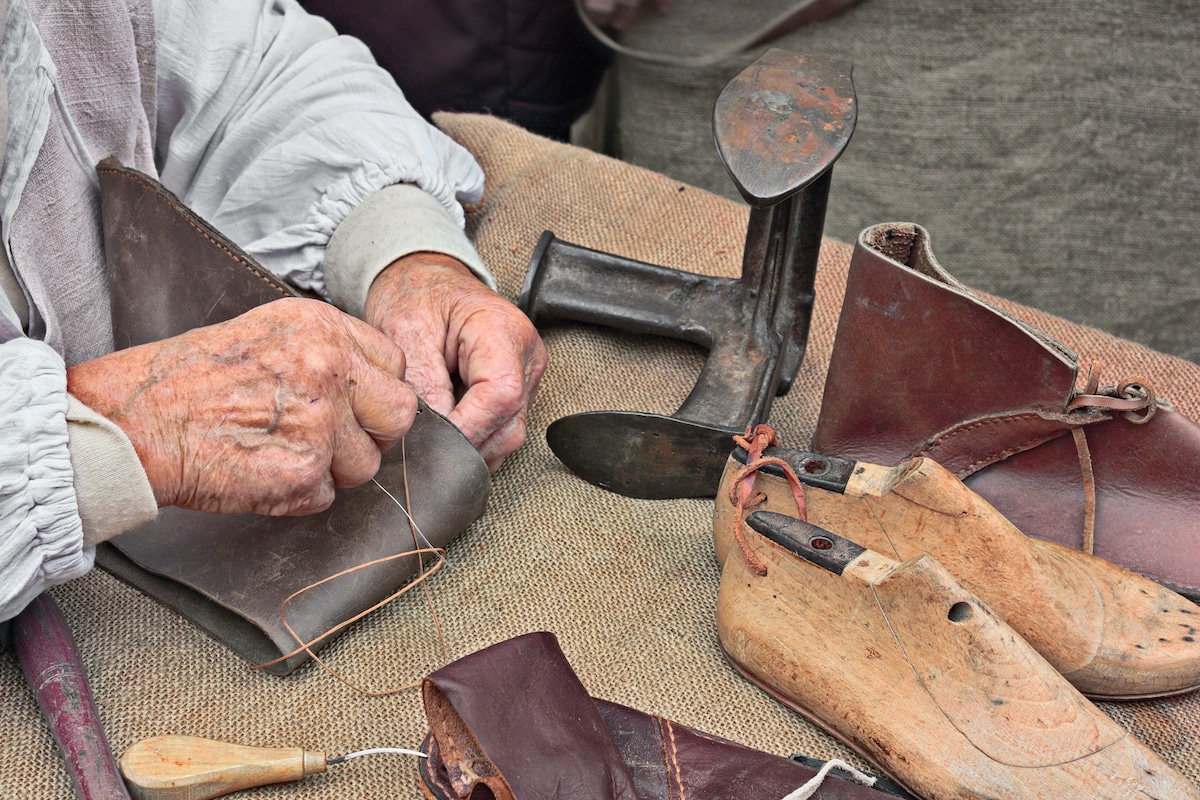 Shoes
Shoes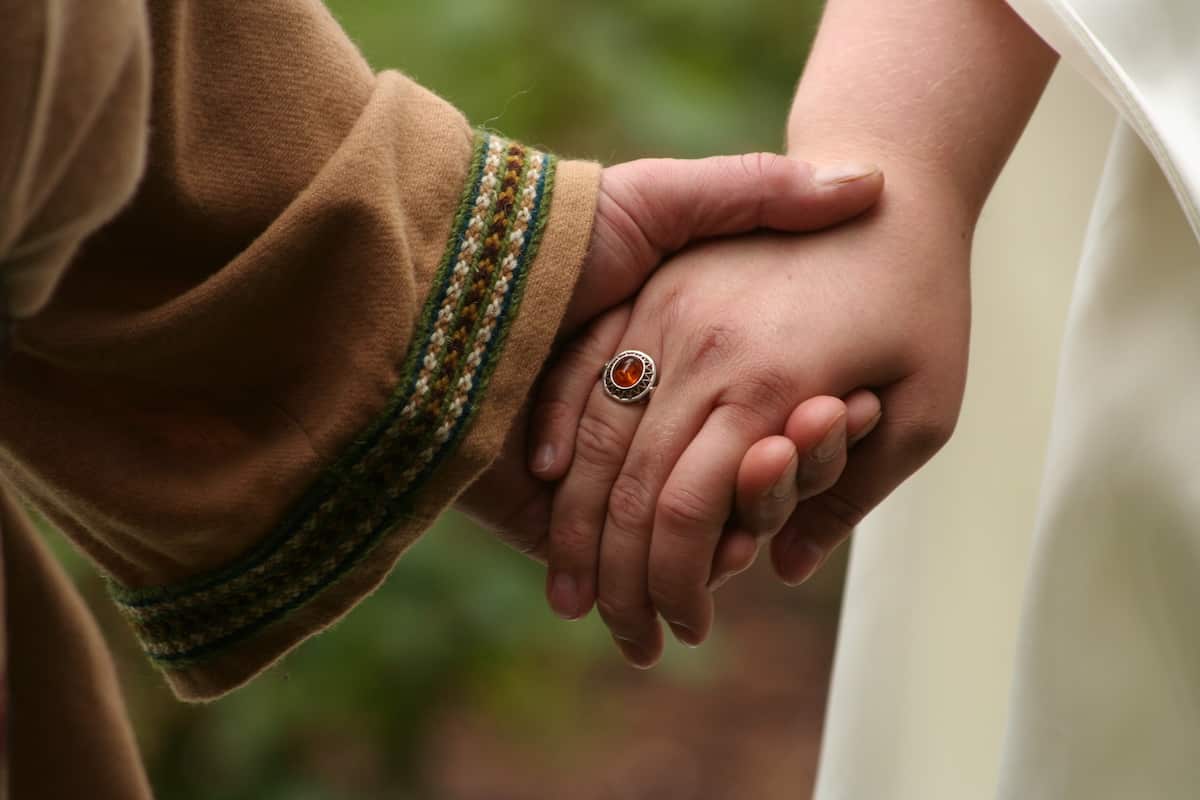 Rings
Rings Necklaces & Pendants
Necklaces & Pendants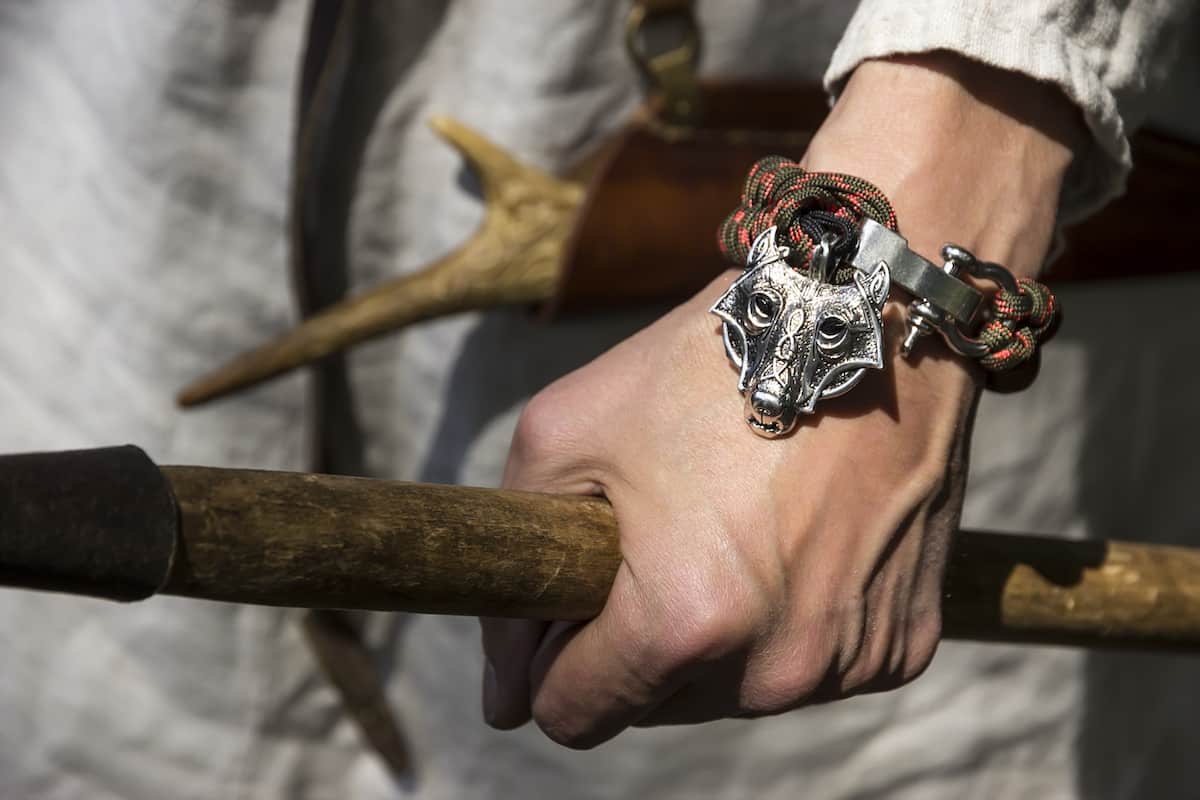 Bracelets
Bracelets


